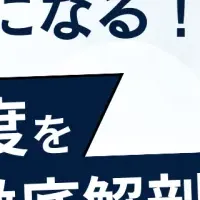
Iron Castings Market to Experience Significant Growth by USD 50.34 Billion from 2024 to 2028
Iron Castings Market Expected to Flourish
The global iron castings market is on a strong upward trajectory, with forecasts indicating a staggering growth of approximately USD 50.34 billion between 2024 and 2028. This remarkable increase is primarily fueled by the burgeoning demand in the automotive industry, where iron castings play a crucial role in manufacturing vital components.
Market Insights
According to recent research from Technavio, the market is expected to grow at a compound annual growth rate (CAGR) of 5.98% during the forecast period. The foundry industry, renowned for its capability to produce various iron castings, is undergoing significant modernization to meet the increasing demand driven by sectors including automotive machinery and infrastructure.
The two main types of iron castings in high demand are ductile iron and gray iron, known for their excellent properties in producing durable and high-performance products. Additionally, the technological advancements in casting methods and foundry equipment are pushing forward production techniques that ensure quality and efficiency.
Market Drivers
One of the primary factors contributing to the growth of the iron castings market is the rising need for metal components across multiple industries. As industries simultaneously expand, the foundry sector finds itself at the center of this demand, producing castings for automotive manufacturing and machinery sectors. Current trends show the increasing popularity of alloy castings and investment casting, which are rapidly gaining traction in various applications.
The driving force behind this growth can be attributed to a combination of technological innovation and regulatory pressures toward sustainability. For instance, advancements in automated molding techniques and environmentally friendly processes are aiding manufacturers in optimizing production and reducing waste. Channels such as cold casting have emerged, offering a method that not only minimizes gas emissions but also facilitates mold recycling, thereby promoting sustainable practices in production.
Challenges Facing the Market
Despite the positive outlook, the iron castings industry faces stiff competition, particularly from aluminum casting, which is becoming increasingly popular due to its lighter weight and corrosion resistance. While iron castings possess superior strength and can endure high temperatures, they are limited in certain applications compared to their aluminum counterparts, creating a competitive environment that foundries must navigate carefully.
Moreover, issues such as casting defects and variations in metallurgical properties need continued innovation and enhancement among industry players. The emergence of potential regulatory measures focusing on environmental impacts adds additional complexity to the operational landscape, necessitating ongoing compliance efforts from manufacturers.
Regional Analysis
The market is particularly robust in the Asia-Pacific region, contributing an impressive 68% to the global market. Key players, including Benton Foundry Inc. and thyssenkrupp AG, are actively enhancing their capacities to meet the burgeoning demand from nations such as China, India, and Japan, all of which are pivotal in automotive production. As the automotive manufacturing rates surge in these countries, the demand for iron casting is expected to persist in a similar upward trend.
Conclusion
The future of the iron castings market appears promising as it embraces advancements in AI and other technologies to refine production processes and enhance competitiveness. As foundries adopt digitalization and energy-efficient practices, the market stands poised for significant growth, responding to both consumer preferences and regulatory requirements. For anyone looking to invest or expand in this domain, now is an opportune time to engage with this rapidly evolving market.
This overview highlights the essential trends, challenges, and opportunities within the iron castings market, providing stakeholders with valuable insights to navigate the future landscape.
Topics Other)










【About Using Articles】
You can freely use the title and article content by linking to the page where the article is posted.
※ Images cannot be used.
【About Links】
Links are free to use.